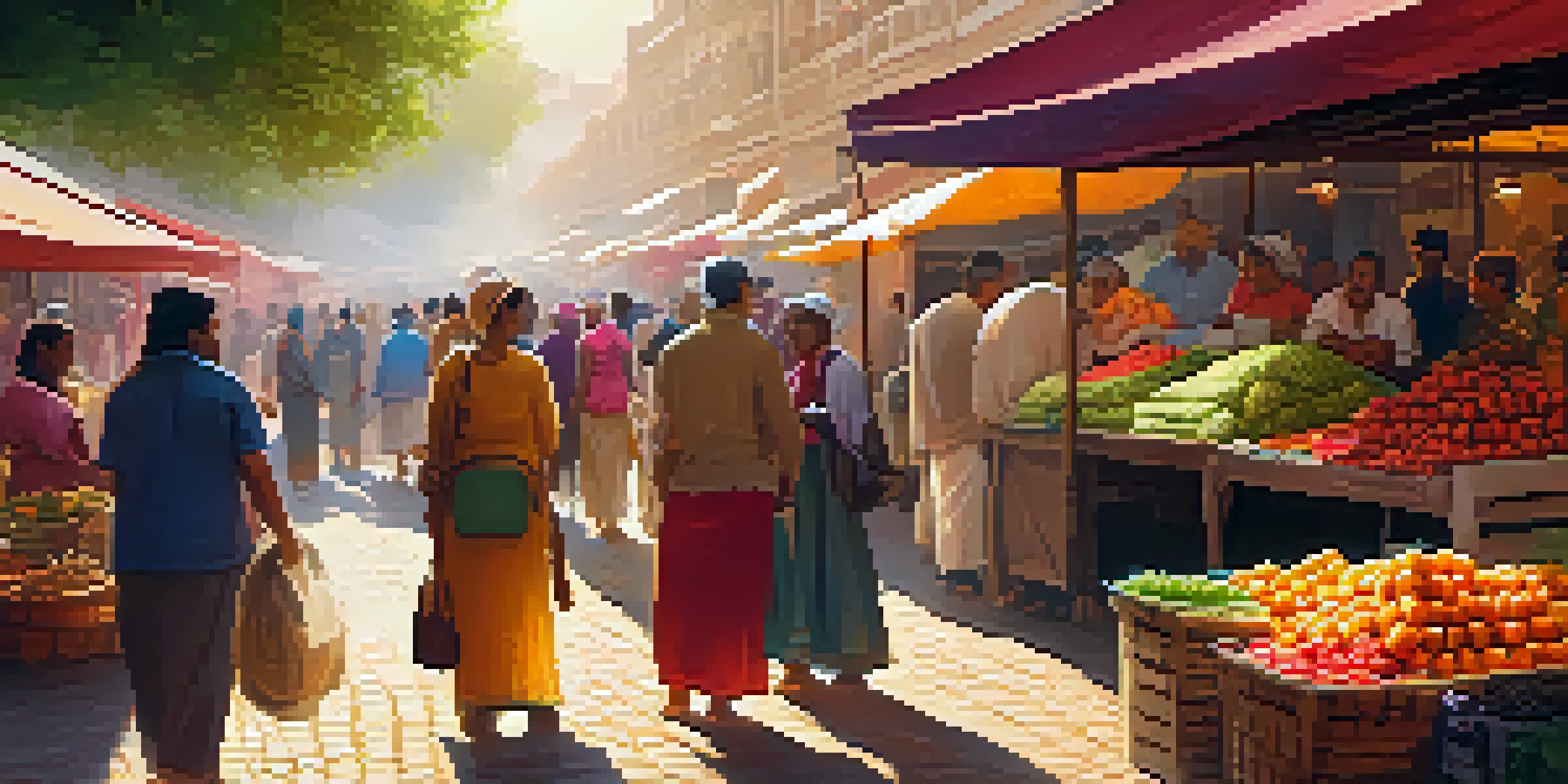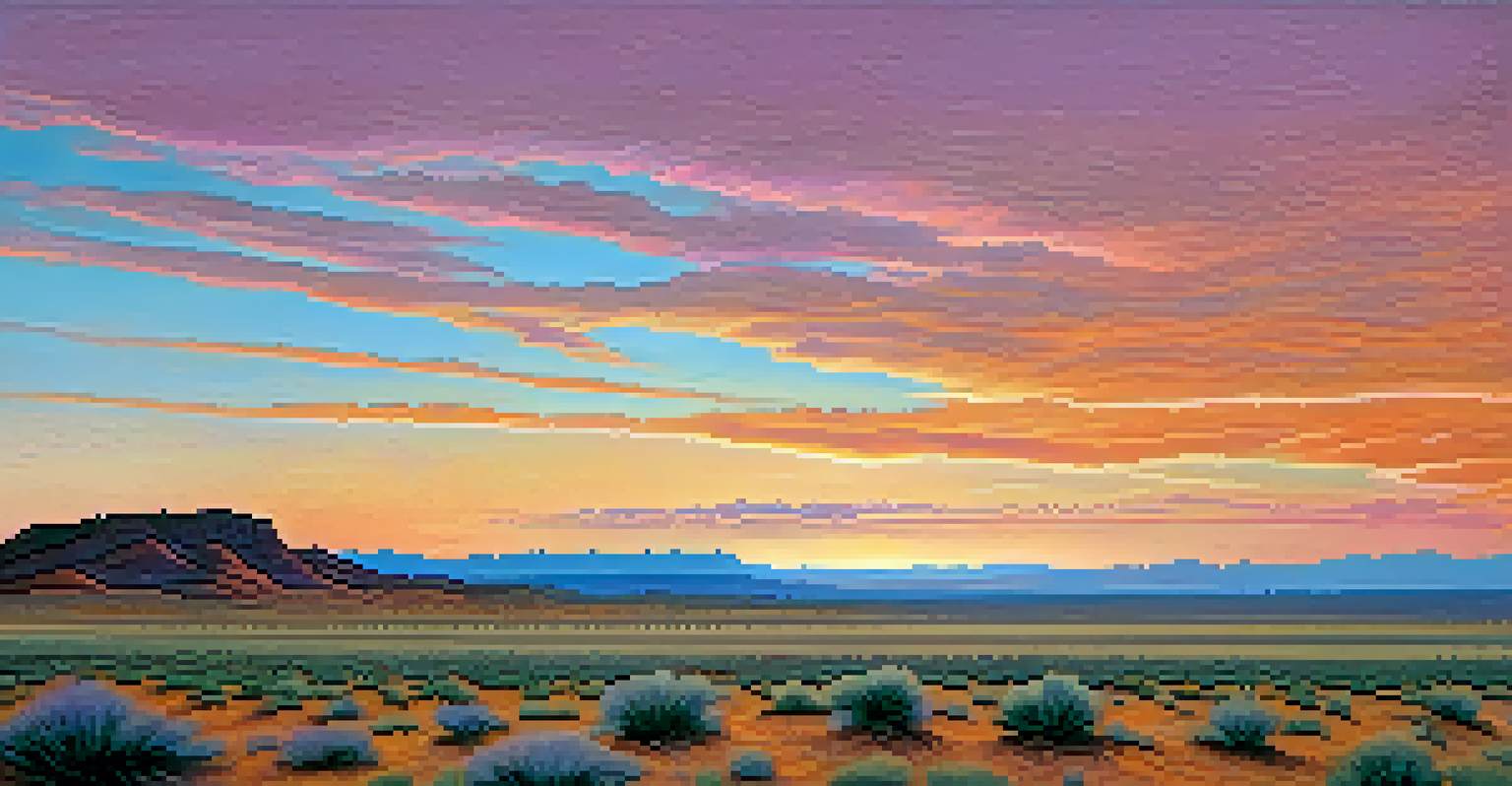Travel Narratives: How Journeys Inspire Artistic Storytelling

The Essence of Travel Narratives in Art
Travel narratives are more than just stories about places; they are reflections of personal experiences and emotions. Artists often draw inspiration from their journeys, capturing the essence of new cultures, landscapes, and people. These narratives allow creators to communicate their adventures in a way that resonates with others, making the audience feel as though they are traveling alongside them.
Traveling – it leaves you speechless, then turns you into a storyteller.
For instance, a painter may depict a vibrant market scene they encountered in a foreign city, infusing the artwork with colors and textures that evoke the atmosphere of that moment. Similarly, writers often weave their travel experiences into novels, creating rich settings that transport readers to distant lands. This blending of travel and art not only enhances creativity but also fosters a deeper appreciation for the world around us.
Ultimately, the power of travel narratives lies in their ability to connect individuals through shared experiences and emotions, turning ordinary journeys into extraordinary artworks.
How Travel Shapes Creative Perspectives
Travel exposes artists to diverse cultures and viewpoints, broadening their creative horizons. By stepping outside their comfort zones, travelers gain new insights that challenge their preconceived notions. This shift in perspective often leads to innovative artistic expressions, as artists incorporate these fresh ideas into their work.

For example, a photographer might capture a moment of daily life in a bustling market in Morocco, showcasing unique traditions that differ from their own. By doing so, they not only document the experience but also invite viewers to see the beauty in diversity. This exchange of ideas and experiences can inspire artists to experiment with new techniques and styles, further enriching their craft.
Travel Narratives Enhance Art
Artists use travel experiences to create compelling narratives that connect audiences with diverse cultures and emotions.
In essence, travel acts as a catalyst for creativity, pushing artists to explore uncharted territories in both their work and personal growth.
The Role of Cultural Immersion in Artistic Expression
Immersing oneself in a new culture can significantly enhance artistic storytelling. When artists engage with local traditions, customs, and languages, they uncover layers of meaning that can deeply influence their work. This cultural immersion often results in art that is not only visually striking but also rich in narrative and context.
The world is a book, and those who do not travel read only one page.
Consider the example of a musician who travels to Brazil and learns about samba rhythms from local artists. This newfound understanding allows them to create music that honors the culture while adding their unique flair. Similarly, visual artists might incorporate traditional motifs and techniques into their artworks, creating a fusion of styles that celebrates both their roots and their travels.
Thus, cultural immersion serves as a bridge between the artist and the world, enabling them to create works that resonate on multiple levels.
Travel as a Source of Inspiration: Stories from Artists
Many renowned artists cite travel as a significant source of inspiration for their work. For instance, the landscapes of Italy inspired countless paintings by masters like Claude Monet and Vincent van Gogh. Their experiences in these breathtaking locations fueled their creativity, leading to iconic artworks that continue to captivate audiences today.
Similarly, contemporary writers often find their voices shaped by their journeys. A novelist might travel to Japan and find inspiration for a compelling story set in a traditional tea house, weaving in elements of Japanese culture and philosophy. These experiences not only inform the narrative but also enrich the storytelling with authenticity.
Cultural Immersion Fuels Creativity
Engaging deeply with local cultures allows artists to enrich their work with authentic elements and fresh perspectives.
By sharing these stories, artists remind us of the profound impact travel can have on our creativity and the narratives we choose to tell.
The Impact of Travel on Writing and Literature
Travel has long been a muse for writers, shaping their narratives and character development. The experiences and encounters that authors have while traveling often translate into compelling plots, giving readers a glimpse into different worlds. Whether it’s a memoir, fiction, or poetry, the influence of travel is evident in the rich tapestry of literature.
Take the works of Paul Theroux, for example, whose travel writing vividly captures the essence of the places he visits. His ability to blend personal reflection with cultural observation creates a narrative that is both engaging and educational. This fusion allows readers to experience the journey alongside him, making them feel connected to the places and people he describes.
In this way, travel not only serves as a backdrop but also becomes an integral part of the storytelling process, enriching the literary landscape.
Visual Arts: Capturing the Essence of Journeys
Visual artists have a unique ability to capture the essence of their travels through their work. Whether it’s a painting, sculpture, or photograph, each piece reflects the artist’s personal journey and the emotions tied to their experiences. This visual storytelling invites viewers to interpret the artwork based on their own experiences, creating a dialogue between the artist and the audience.
For instance, consider the breathtaking landscapes painted by artists like Georgia O'Keeffe, who found inspiration in the New Mexico desert. Her works evoke a sense of place that transports viewers to those serene environments. Each brushstroke tells a story, illustrating not just what she saw but how the landscape made her feel.
Travel Promotes Personal Growth
Experiencing new environments helps artists develop resilience and adaptability, which enhances their creative expression.
Thus, visual arts become a medium through which artists express their journeys, allowing others to experience the world from their perspective.
The Connection Between Travel and Creative Growth
Travel fosters not only artistic inspiration but also personal growth, which in turn enhances creativity. As artists navigate new environments and face challenges, they develop resilience and adaptability—qualities that are essential in the creative process. This growth often leads to a deeper understanding of themselves and their work.
For example, a writer might find that traveling alone forces them to confront their thoughts and feelings, resulting in more authentic storytelling. Similarly, a filmmaker may discover new narrative techniques by experiencing different cultures and storytelling traditions. This transformation can lead to innovative approaches that push the boundaries of their art.

Ultimately, the connection between travel and creative growth underscores the importance of exploration for artists, who thrive on new experiences that shape their work and enrich their lives.